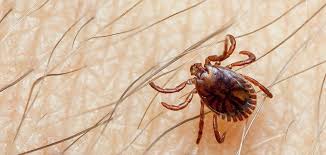Islamabad, June 25, 2024 — As Pakistan grapples with a severe outbreak of Crimean-Congo haemorrhagic fever (CCHF), health experts are urging for heightened surveillance and stringent control measures to prevent the virus from spreading further. The outbreak has already resulted in 13 reported infections, prompting urgent calls for increased monitoring and public awareness.
CCHF, a deadly disease caused by a tick-borne Nairovirus, is transmitted to humans through tick bites or contact with infected animal blood or tissues. Common carriers of the virus include cattle, goats, sheep, and hares. The disease, known for its high mortality rate, can lead to severe hemorrhagic fever, with symptoms such as high fever, muscle pain, dizziness, and bleeding from the nose.
Dr. Nidhin Mohan, a consultant in internal medicine at Narayana Health City in Bengaluru, emphasized the need for proactive measures. “The recent spread of the Congo virus in Pakistan is concerning and calls for stringent control measures in India as well,” Dr. Mohan told IANS. He highlighted the importance of increased surveillance, particularly in border areas, and educating the public on preventive methods such as using insect repellent, wearing protective clothing, and properly cleaning wounds caused by livestock.
The World Health Organization (WHO) reports that CCHF has a mortality rate of up to 40 percent and is challenging to prevent or treat. The virus is listed among WHO’s priority diseases, with recent cases reported in Eastern Europe, France, Spain, and Namibia. In 2023, CCHF caused numerous deaths in Iraq and Pakistan.
Dr. Dhiren Gupta, Co-Director of PICU, Paediatric Pulmonology, and Allergy at Sir Ganga Ram Hospital, underscored the importance of early diagnosis through PCR testing. “Clinical features are very similar to dengue, including high-grade fever, vomiting, and headache. Overlapping symptoms of hemorrhagic fevers like dengue, Kyasanur forest disease, and Hantavirus hemorrhagic fever pose significant challenges,” Dr. Gupta explained. Early detection is crucial for effective patient management and to prevent community transmission and nosocomial infections.
General supportive therapy remains the primary approach for managing CCHF, with intensive monitoring needed to guide volume and blood component replacement. Dr. Gupta advised against panic but stressed the necessity for comprehensive surveillance measures. “The government should start active human, animal, and entomological surveillance. Isolation and treatment of cases following universal precautions, contact tracing, spraying cattle with anti-tick agents, and communicating the risk to the public are essential steps,” he said.
Experts agree that strict measures and heightened awareness are vital to mitigating the risk and controlling the spread of CCHF. Public education on preventive measures and robust surveillance systems are key to combating this deadly virus.












